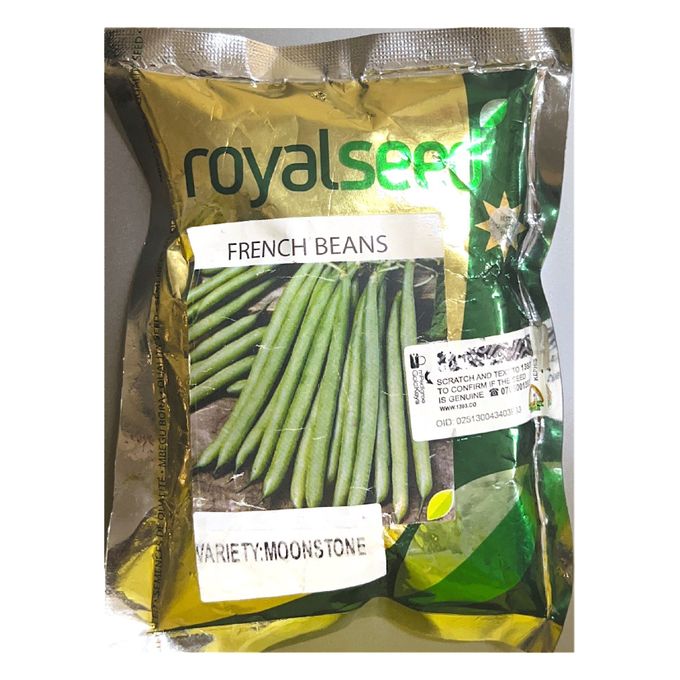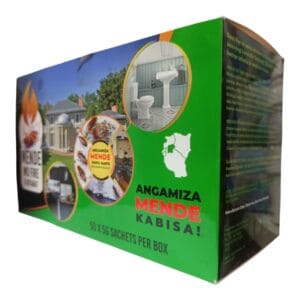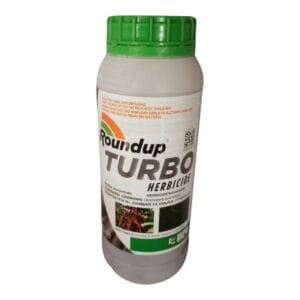French Beans Seeds – Premium Varieties for Superior Yields and Quality Produce
Original price was: KSh 2,500.00.KSh 2,400.00Current price is: KSh 2,400.00.
French Beans Seeds are high‐quality varieties selected for vigorous growth, uniform pod formation, and excellent yield potential. Ideal for home gardens and commercial farms, these seeds offer tender, flavorful beans suitable for fresh markets. Reliable germination and strong disease resistance ensure healthy crops and profitable harvests for growers in diverse climatic conditions.
Description
French Beans Seeds – Premium Varieties for Superior Yields and Quality Produce
French Beans, also known as snap beans or string beans, are a versatile and popular vegetable cultivated worldwide. These tender green pods are prized for their crisp texture, mild flavor, and nutritional value. Our French Beans Seeds have been carefully selected to provide farmers and home gardeners with reliable performance, uniform growth, and resistance to common diseases. Whether grown in open fields, raised beds, or containers, these seeds deliver bountiful harvests and high‐quality produce that meets market and household demands.
Growing French Beans offers multiple advantages: they improve soil fertility through nitrogen fixation, fit well into crop rotations, and mature quickly for early returns. With proper site preparation, planting, and management, farmers can achieve consistent yields and satisfy customer preferences for fresh, nutritious vegetables. This comprehensive guide covers everything you need to know about cultivating French Beans from sowing to harvest, ensuring successful production and maximum profitability.
Key Features of French Beans Seeds
- High germination rate for uniform plant stands
- Short to medium maturity groups, maturing in 50 to 65 days
- Strong resistance to common diseases such as anthracnose, rust, and mosaic virus
- Vigorous vine growth or bush habit depending on variety
- Uniform pod length between 15 and 20 centimeters
- Crisp texture and tender pods with excellent taste
- Suitability for multiple cropping seasons under various climatic zones
Advantages of Cultivating French Beans
- Improves soil nitrogen levels through symbiotic bacteria in root nodules
- Fits well into intercropping systems with cereals, maize, or millet
- Quick turn around time with early maturing options
- High market demand for fresh and organic produce
- Minimal postharvest processing required
- Suitable for small scale and commercial production
- Provides a healthy source of protein, vitamins, and minerals
Recommended Varieties for Different Growing Conditions
- Bush Varieties – Compact plants reaching 40 to 50 centimeters in height; ideal for small plots and intercropping
- Pole Varieties – Climbing vines requiring trellises; produce higher yields per area and multiple harvests over 60 to 70 days
- Early Maturing Varieties – Ready for harvest in 50 to 55 days; suited for short rainy seasons and quick market supply
- Heat‐Tolerant Varieties – Developed to withstand temperatures above 30 degrees Celsius; maintain productivity during warm spells
- Disease Resistant Varieties – Bred for tolerance to anthracnose, rust, mosaic, and bacterial blight; reduce the need for frequent fungicide applications
Site Selection and Soil Preparation
- Choose a location with full sun exposure (at least 6 to 8 hours of daylight)
- Select well‐drained, fertile soils with good organic matter; ideal pH is between 6.0 and 7.0
- Perform soil testing to determine nutrient levels and adjust accordingly
- Incorporate well‐decomposed manure or compost at a rate of 5 to 10 tonnes per hectare two to three weeks before planting
- Tillage or double digging to loosen the topsoil to a depth of 20 to 30 centimeters
- Level the seedbed to ensure uniform water distribution and reduce waterlogging
Seed Treatment and Sowing Methods
- Seed Treatment – Treat seeds with a fungicide such as thiram or captan to prevent soilborne diseases; for organic plots, use hot water treatment at 52 to 54 degrees Celsius for 20 minutes
- Planting Time – Sow after the last frost when soil temperatures exceed 15 degrees Celsius; in tropical regions, plant at the onset of the rainy season
- Planting Depth – Sow seeds at 2 to 3 centimeters deep into the soil; ensure good seed‐soil contact by lightly firming the soil
- Spacing for Bush Varieties – 30 to 40 centimeters between plants in rows spaced 45 to 60 centimeters apart
- Spacing for Pole Varieties – 50 to 75 centimeters between plants in rows spaced 75 to 90 centimeters apart; provide trellising or stakes at planting time
- Seeding Rate – 20 to 25 kilograms per hectare for bush varieties; 10 to 15 kilograms per hectare for pole varieties due to lower plant population
Crop Management Practices
Fertilizer Recommendations
- Apply a basal fertilizer such as NPK 17:17:17 at 200 to 250 kilograms per hectare during land preparation
- Side dress with calcium ammonium nitrate or urea at 50 to 75 kilograms per hectare four weeks after emergence
- Incorporate phosphorus‐rich fertilizers in deficient soils to support root development; apply single super phosphate at 100 to 150 kilograms per hectare if required
- For organic systems, supplement with organic foliar feeds such as seaweed extract or molasses tea for micronutrient support
Water and Irrigation Management
- Maintain consistent soil moisture during germination and flowering; avoid water stress especially during pod formation
- Use drip or furrow irrigation to ensure uniform water application; avoid overhead sprinklers to reduce foliar diseases
- Ensure well‐drained soils to prevent waterlogging, which leads to root rot and poor yield
- Schedule irrigation every 5 to 7 days depending on soil type, rainfall, and evapotranspiration rates
Weed Control
- Perform shallow cultivation or hand weeding two to three weeks after planting to reduce early competition
- Apply pendimethalin or flumioxazin as a pre‐emergence herbicide for broadleaf and grass weed control; follow label rates of 1.5 to 2.0 liters per hectare depending on soil conditions
- Mulch with organic materials such as straw or grass clippings to suppress weed growth and conserve soil moisture
- Maintain weed free strips around planting rows to reduce pest and disease incidence
Support Structures for Pole Varieties
- Install trellises or stakes at planting; use bamboo poles, wooden stakes, or metal posts 1.5 to 2 meters tall
- Tie vines gently to supports when they reach 20 to 30 centimeters in height to prevent lodging
- Ensure proper spacing between supports to allow adequate airflow and reduce disease pressure
Pest and Disease Management
Common Insect Pests
- Aphids – Monitor regularly; apply neem oil or insecticidal soap if infestation exceeds economic threshold
- Bean Flea Beetles – Use spinosad or carbaryl as needed; drop trays under infected plants to assess damage
- Leaf Miners – Manage using Bacillus thuringiensis sprays and prune infested leaves
- Thrips – Apply neem extracts or imidacloprid at 0.2 to 0.3 milliliters per liter when populations rise
Common Diseases and Control
- Anthracnose – Caused by Colletotrichum lindemuthianum; apply chlorothalonil or mancozeb at label rates; rotate with non legume crops
- Bacterial Blight – Use copper oxychloride at 2 to 3 grams per liter of water; remove and destroy infected debris
- Root Rot – Maintain well drained soils; treat seeds with fungicides like captan or thiram before planting
- Powdery Mildew – Prevent using sulfur or potassium bicarbonate; ensure good airflow between plants
- Rust – Apply systemic fungicides such as azoxystrobin or triazoles at early signs of infection
Growth and Development Stages
- Emergence – Occurs within 7 to 10 days after sowing; seedlings should have two true leaves before thinning
- Vegetative Stage – From 2 to 4 weeks after sowing; canopy closure reduces weed competition
- Flowering – Begins around 30 to 35 days; ensure adequate pollination and water supply
- Pod Filling – Critical stage for nutrient uptake; maintain soil moisture and consider foliar feeding with potassium for pod quality
- Harvest Maturity – Pods are tender, crisp, and fully elongated; harvest 50 to 65 days after sowing depending on the variety
Harvesting Practices
- Harvest pods early in the morning when temperatures are cooler to maintain crispness
- Use sharp scissors or knives to cut pods without damaging vines
- Handle pods gently to avoid bruising and maintain market quality
- Harvest every 2 to 3 days to encourage continuous pod production
Postharvest Handling and Storage
- Immediately cool harvested pods to 10 to 12 degrees Celsius to extend shelf life
- Pack in ventilated crates or perforated bags to allow air circulation
- Do not wash pods before storage; remove field heat by placing in cool water if necessary
- Store French Beans at 90 to 95 percent relative humidity and 10 to 12 degrees Celsius for up to two weeks
- For fresh market, sell within 48 hours of harvest for best quality
Yield Expectations
- Bush Varieties – 2 to 3 tonnes per acre under good management
- Pole Varieties – 4 to 6 tonnes per acre due to extended harvest period
- Organic Production – 1.5 to 2.5 tonnes per acre depending on input availability
- Greenhouse Production – 6 to 8 tonnes per acre with controlled environment and fertigation
Market Opportunities and Economics
- High demand in urban markets and supermarkets for fresh, locally grown French Beans
- Export potential to neighboring countries and regional markets
- Value addition through grading, packing, and cold chain supply
- Premium prices for organic or pesticide‐free produce
- Cost of production includes seeds, fertilizer, labor, and transport; gross margins improve with high yields and efficient marketing
Farmer Testimonials and Success Stories
Growers in Kiambu County achieved consistent yields of 3 tonnes per acre using our bush variety under rain fed conditions, with minimal disease incidence. In Nakuru, pole bean growers on large commercial farms reported 5 tonnes per acre through drip irrigation and stakeholder training on integrated pest management. Community groups in Kisii successfully established kitchen gardens with French Beans, improving household nutrition and income generation.
Where to Buy French Beans Seeds
Totalease Ventures supplies certified French Beans Seeds of both bush and pole varieties. Our seeds are sourced from reputable breeders and tested for high germination and purity. Whether you are a smallholder or commercial grower, we deliver nationwide—ensuring you receive genuine seeds on time. Visit our Seeds Category to place your order and explore other high quality vegetable and grain seeds.
Order French Beans Seeds Today
Boost your farm’s productivity with superior French Beans Seeds. Click below to order now via WhatsApp and enjoy fast delivery across Kenya. Get expert agronomic support to maximize your yield.




Reviews
There are no reviews yet.